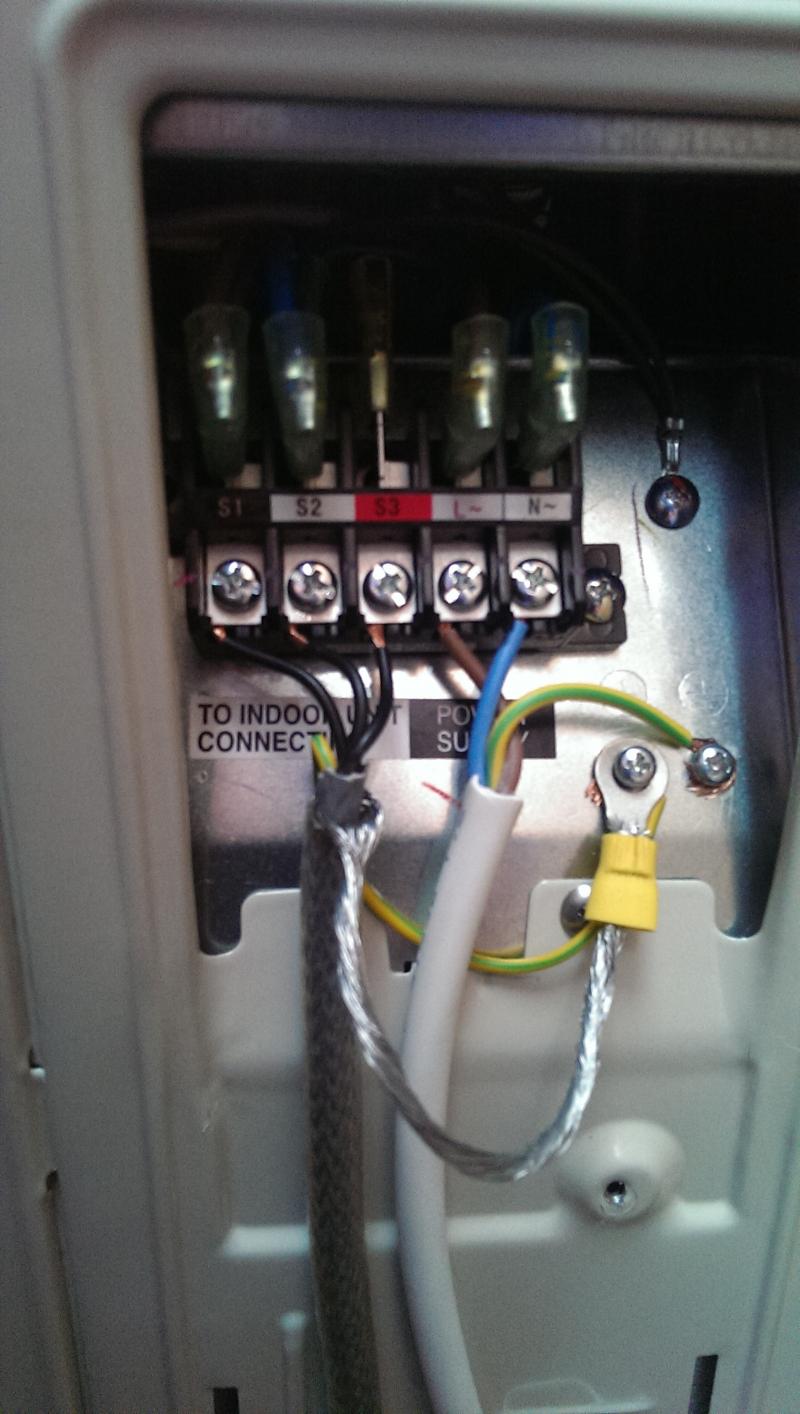Hi,
I'm about to get an air conditioning/inverter unit installed by a refrigeration engineer. We are going to use a temporary flex/plug to commission and then I'll get an electrician to put a permanent feed in.
It would really be helpful to get some views on the best way to install the power supply, it will help me sound like I know what I am talking about when shopping around for a price for the work.
The unit has a starting/running current of 4.4A and power input of 0.9kW. It needs a 10A breaker.
It is going to be really difficult to give it a separate feed from the CU, it is about as far away as it could be. The nearest mains electricity is an inside socket which is on the upstairs sockets ring which is also protected by a RCD at the CU (13 years old).
Questions are:
1. I know it is not good practice but is it acceptable to take the power from this ring. I can't see the load on the upstairs socket ever getting anywhere near 32A, so hoping this will be okay?
2. If I can use the the ring, whats the best way of connecting in. I was thinking that a spur through the wall into a MK Masterseal Plus FCU (10A) would be the easiest approach. I'm not sure though if SWA cable would fit into this, although another cable type protected by flexible conduit might work (the outdoor unit is round the side of the house so low risk of interference).
Another alternative I though was to put a switched FCO inside next to the socket and bring a spur through to a rotary isolator with SWA then to the unit. The internal FCU would be highly visible with access by young hands but although a rotary isolator isn't essential (apparently) may be a more substantial option. I can't think of any other alternatives.
3. If connected into a spur from the RCD protected ring, would this provide RCD protection by default. I'm guessing being an outdoor unit, RCD protection is essential?
4. Mitsubishi optionally recommend providing a 6A switched protection between the outdoor and indoor unit. I'm guessing that this is so that the indoor unit can quickly be isolated, although in my situation it would be nearly as quick to go to the CU or switch for the outdoor unit. Does anyone have any thoughts whether I need to put in a switch here, I believe most installations don't have these.
5. Finally, the outdoor/indoor units are connected with a 4 core SY cable. I'll get an electrician to sort out my work (see attached photo) but do I need to get some SY type glands or could I just earth sleeve the braid and just tidy up how I've wired it so far?
I'd be very grateful of any views on the above ramble.
Many thanks,
Damian
[/img]
I'm about to get an air conditioning/inverter unit installed by a refrigeration engineer. We are going to use a temporary flex/plug to commission and then I'll get an electrician to put a permanent feed in.
It would really be helpful to get some views on the best way to install the power supply, it will help me sound like I know what I am talking about when shopping around for a price for the work.
The unit has a starting/running current of 4.4A and power input of 0.9kW. It needs a 10A breaker.
It is going to be really difficult to give it a separate feed from the CU, it is about as far away as it could be. The nearest mains electricity is an inside socket which is on the upstairs sockets ring which is also protected by a RCD at the CU (13 years old).
Questions are:
1. I know it is not good practice but is it acceptable to take the power from this ring. I can't see the load on the upstairs socket ever getting anywhere near 32A, so hoping this will be okay?
2. If I can use the the ring, whats the best way of connecting in. I was thinking that a spur through the wall into a MK Masterseal Plus FCU (10A) would be the easiest approach. I'm not sure though if SWA cable would fit into this, although another cable type protected by flexible conduit might work (the outdoor unit is round the side of the house so low risk of interference).
Another alternative I though was to put a switched FCO inside next to the socket and bring a spur through to a rotary isolator with SWA then to the unit. The internal FCU would be highly visible with access by young hands but although a rotary isolator isn't essential (apparently) may be a more substantial option. I can't think of any other alternatives.
3. If connected into a spur from the RCD protected ring, would this provide RCD protection by default. I'm guessing being an outdoor unit, RCD protection is essential?
4. Mitsubishi optionally recommend providing a 6A switched protection between the outdoor and indoor unit. I'm guessing that this is so that the indoor unit can quickly be isolated, although in my situation it would be nearly as quick to go to the CU or switch for the outdoor unit. Does anyone have any thoughts whether I need to put in a switch here, I believe most installations don't have these.
5. Finally, the outdoor/indoor units are connected with a 4 core SY cable. I'll get an electrician to sort out my work (see attached photo) but do I need to get some SY type glands or could I just earth sleeve the braid and just tidy up how I've wired it so far?
I'd be very grateful of any views on the above ramble.
Many thanks,
Damian
[/img]


